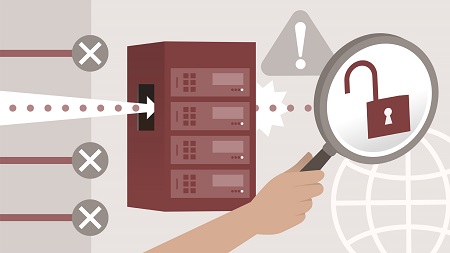
English | MP4 | AVC 1280×720 | AAC 44KHz 2ch | 1h 30m | 246 MB
Anything connected to a network that offers services such as a printer, a router or a web server, provides open ports to accept connection requests. If the correct ports aren’t open on a device, that device won’t function properly. If too many ports are open, the device might be vulnerable to attack. Nmap is one of the most important tools available for cybersecurity professionals, network engineers, and system administrators, Nmap allows you to scan network devices and determine what ports are open so that you can learn what services you’re exposing on a network, verify firewall configurations, and perform testing and troubleshooting. Once we’ve covered Nmaps feature set, you’ll be ready to run Nmap scans on your own network. And if you don’t have systems that you can scan right away, I’ve built some servers that you can scan to get some hands-on experience. Hi, I’m Mike Chapple and I use Nmap almost every day. It’s a fantastic tool and I’m looking forward to sharing it with you. All right, let’s get rolling.
Table of Contents
Introduction
1 Scanning network ports with Nmap
2 What you need to know before taking this course
1. Network Scanning
3 TCPIP networking
4 IP addressing
5 Network ports
6 ICMP
7 Network scanning
8 Scanning and the law
2. Installing Nmap
9 Installing Nmap on Windows
10 Installing Nmap on macOS
11 Installing Nmap on Debian and Ubuntu Linux
12 Installing Nmap on Red Hat and Fedora Linux
13 Building Nmap from source
14 Testing your Nmap installation
3. Scanning with Nmap
15 Running and interpreting a simple Nmap scan
16 Scanning multiple systems
17 Using Nmap with IPv6 addresses
4. Configuring Nmap Scans
18 Host discovery with Nmap
19 DNS options in Nmap
20 TCP scanning with Nmap
21 UDP scanning with Nmap
22 Selecting ports to scan
23 Scan timing
5. Fingerprinting Systems and Services
24 Operating system detection
25 Service version detection
26 Scanning shortcut
6. Scan Output
27 Formatting Nmap scan results
28 Reviewing verbose Nmap output
7. Case Studies in Scanning
29 Challenge Probing servers
30 Solution scan1.certmike.com
31 Solution scan2.certmike.com
32 Solution scan3.certmike.com
33 Solution scan4.certmike.com
Conclusion
34 Continuing your Nmap education
Resolve the captcha to access the links!